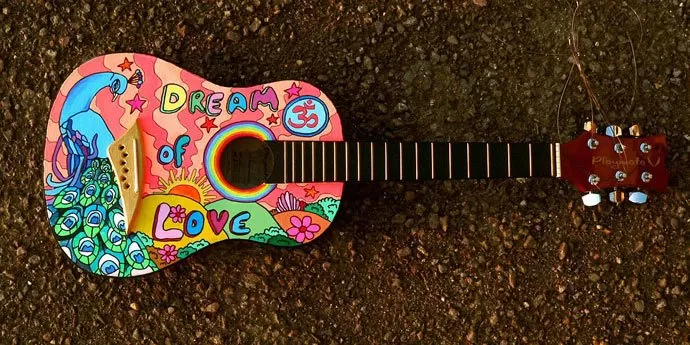Does Sharpie Stay On Guitar?
You can write on a guitar with a sharpie, and it will stay there permanently. As someone who has owned multiple guitars, I can confirm that it is possible to draw on them and decorate them without damage to the guitar.
In this article, we will go over items you can use to remove from a guitar, how to paint and or decorate a guitar, the type of paint to use, if you need to sand the guitar first or not, and what to use to seal a painted guitar. I will also address frequently asked questions like how to get a sharpie off of a guitar, how to protect your guitar signature, and if painting a guitar will ruin it or not.
Read Also: Does Guitar Pickup Matter? Sound Difference On Type & Price
Three Things You Can Use to Draw on a Guitar
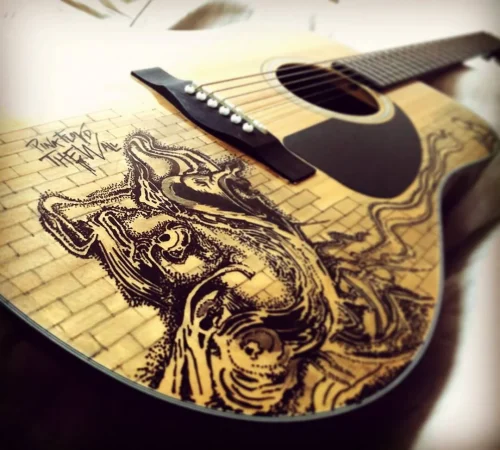
There are variety of pens you can use on your guitar
1. Permanent marker
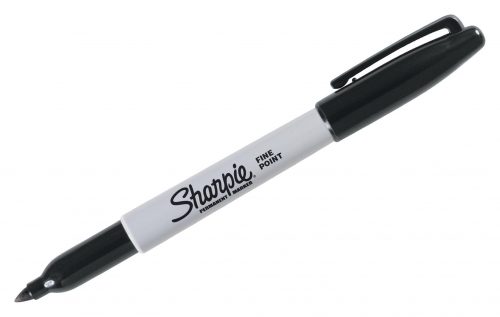
A permanent marker can be used to draw on your guitar and cause no damage. However, the writing on the guitar may fade slightly over a more extended time. They will dry almost instantly and is ink based.
2. Paint pen
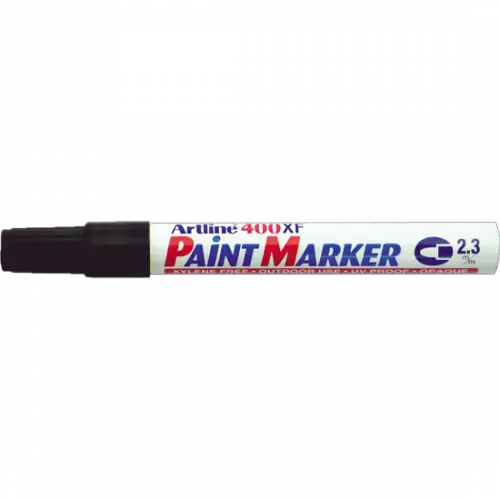
Using a paint pen will result in a more permanent marking with no damage to the guitar than a regular sharpie or a permanent marker. However, if you were to use one, it may be a good idea to first write with a standard marker and then trace over it. They will take longer to dry than permanent ink. On average, it can take two to three hours.
3. Guitar Wrap
If you are concerned that you may not have the best artistic abilities, you can purchase a custom guitar wrap. It is perfectly safe for the guitar to do so, and since the artwork is already done, you can trace it to the shape of your guitar, then apply it to the body of the guitar. Please reference the link below for more information.
Guide To Painting Guitar
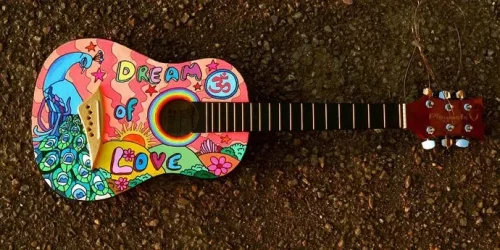
Remove strings before painting the guitar
1. Remove strings
Take a wire or string cutter to remove your strings, as they would get in the way of any painting you are doing.
2. Remove the neck
Once the strings are removed, place the guitar with the back facing up. Take a Phillips screwdriver to remove the screws holding the neck in place. If it is an acoustic guitar, you can remove the neck by first removing the bottom six to seven frets.
Next, apply a hairdryer or steamer to the neck area attached to the guitar body. Finally, use a flat scraper to gently slide it under the neck and remove it from the acoustic guitar’s body.
3. Remove hardware
Remove any knobs on the guitar and remove any screws on the front of the guitar. Once you have done so, you can remove any electrical components and cut the wires with a wire cutter or scissors. All electrical components should be removed from the guitar at this point.
4. Sand off the old finish
From here, you can take sandpaper to sand off the old finish on your guitar. Once you have done so, take an electric sander to sand the guitar’s body. You will need rough sandpaper to sand areas of the guitar that you may not be able to reach with the electric sander.
5. Apply fine sandpaper
Use fine sandpaper to make the guitar as smooth as possible. This is important because you need a smooth surface to draw on. Any rough surface will disturb your painting process – resulting in defects.
6. Remove any debris from the guitar
Using compressed air can apply it to the guitar’s surface to remove any debris from the guitar’s body. This is same as point above. Having any debris or rough surface will impact your painting later.
7. Use a grain filler
If your guitar body is made of porous wood (like mahogany), apply the filler to any area as needed to create a flat surface.
8. Apply mineral spirits
Get some gloves and apply the mineral spirits to the guitar’s body to remove any oils. Do not touch the guitar with your bare hands during this process. Once you have finished, please wait a few hours to let it dry before continuing.
9. Apply wood sealer
You can take a regular cloth and use any wood sealer purchased at a typical hardware store. Apply three to five coats of the sealer allowing each one to dry before applying the next one. Each coat should take approximately three to five hours.
10. Place masking tape where you attach the neck
This can make the neck easier to reattach later. Apply the masking tape to the areas where you do not want the new paint and finish to go.
11. Apply primer
Apply at least two to three coats of primer to the guitar’s body. Wait until each coat is fully dry before starting the painting process
12. Apply the spray paint
When painting the guitar, apply a few coats of spray paint. Wait for each coat of paint to dry before continuing with the next one. This can take approximately a week.
13. Apply Stain (optional)
If you are using a stain on the guitar, take a damp cloth to wet the guitar’s body before applying the stain to it. Follow the directions from the manufacturer of the stain you will use.
14. Apply a clear lacquer coat
Spray on coats of lacquer to the guitar’s body as thinly as possible. Wait for each coat to dry before applying the next coat. This can take anywhere from a day to three or four days. Do this as often as needed until you have a look you want.
15. Polish the finish
Polish the finish with a wet sanding technique. When doing so, start with a lower grain of sandpaper (around 400 grit), then work your way up to a stronger one (2000). Please use a wet sanding technique. A damp cloth can be used to gently dampen the area you are sanding.
16. Reassemble the guitar
Reattach all of the items you removed. You are now done.
Also Read: Satin Guitar Finish Vs Gloss: Looks, Price, & Cleaning Tips
What Kind of Paint Do You Use on a Guitar?
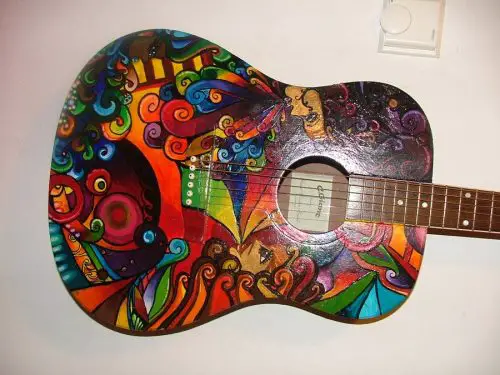
Use acrylic spray for finest results
Acrylic spray paint is the best type to use. You can also go to your local art store and ask for recommendations based on the type of wood your guitar’s body is.
FAQs
Q: Do You Need to Sand My Guitar Before Painting?
Sanding your guitar is highly recommended before painting. This will help smoothen it out to ensure the paint looks as good as possible.
Q: What Do You Seal a Painted Guitar With?
Wood sealer from a regular hardware store. You can ask someone at the store what the best option is for the wood your guitar’s body is.
Q: How Do You Get Sharpie off a Guitar?
Take a dry-erase marker and draw over the sharpie writing. You then wait about 5 to ten seconds and wipe it off. The material from a dry-erase marker will absorb the sharpie ink.
Q: How Do I Protect My Guitar Signature?
Apply a clear acrylic coat, then apply a clear polyurethane lacquer over the signature. Check the directions on the coat and lacquer for the drying times.
Q: Will Painting a Guitar Ruin It?
A guitar can be painted multiple times without running it. Painting a guitar only changes the cosmetic appearance, not the instrument’s functionality.


